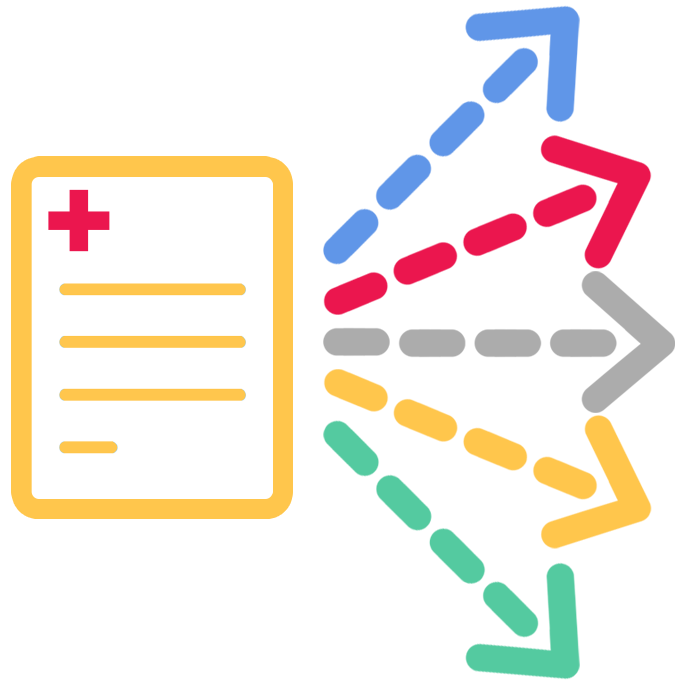Why Work Comp Electronic Bills Need Multiple Clearinghouses

Here’s a question we often get: “Our office sends our electronic bills to a clearinghouse. Why do so many of them never reach the insurance carrier?”
Clearinghouses claim to scrub and electronically submit bills to all payers. In reality, clearinghouses often mismanage electronic bill delivery, resulting in delayed or outright lost bills. We know this first-hand — not only do we hear constant “lost bill” stories from providers, we’ve had our own bad experience.
This post is a cautionary tale about how providers cannot rely on a single clearinghouse.
Electronic billing protects a provider’s revenue with verifiable bill delivery to payers, which guarantees prompt payment by law. Unfortunately, merely submitting all bills to a single clearinghouse can set off an unprecedented billing nightmare, one that can make providers believe electronic billing for workers' comp just doesn't work. Electronic billing, however, isn’t the problem.
Direct Electronic Bill Routing
In California, payers use one of four different clearinghouses. The Division of Workers’ Compensation (DWC) requires providers that bill electronically to establish a direct electronic route to either the clearinghouse used by each payor or to the payor’s claims administrator directly.
No single clearinghouse is the designated clearinghouse for every payor or claims administrator. When a provider sends all bills to a single clearinghouse, that clearinghouse will inevitably need to reroute many of the bills to a different clearinghouse. This clearinghouse to clearinghouse bill rerouting is considered indirect electronic billing.
AND, indirect electronic billing simply does not work.
There are four different clearinghouses, each using different proprietary technology, serving thousands of self-insured employers, insurers, TPAs and bill reviews. When a clearinghouse needs to reroute a bill to another clearinghouse, it may make a nominal attempt to get the provider's electronic bills to the right clearinghouse, but often the clearinghouse simply mails the bill (and charges the provider for mailing costs).
The result? You guessed it: lost bills.
With indirect electronic bill routing, providers’ bills go missing and untraceable, lost despite being sent “electronically” (to the wrong clearinghouse). Instead of taking responsibility, the clearinghouse blames the claims administrator for not being electronic billing compliant — a misrepresentation designed to save face with the provider.
Even worse, this indirect routing leaves the provider out of compliance! Technically, the claims administrator is free to reject these indirect electronic bills, because the provider failed to send them directly to the claims administrator's chosen clearinghouse.
By contrast, daisyBill genuinely and effectively takes responsibility for the direct routing of every bill our providers submit. Instead of using a single clearinghouse, we send bills directly to all four clearinghouses. This allows us to maintain unobstructed electronic connections to every claims administrator. Wherever our providers’ bills need to go, the bills get there quickly and compliantly.
Too often, the clearinghouses mislead providers, claiming the ability to process all the provider’s bills. The clearinghouse assures the provider that bills will be re-routed to each claims administrator’s designated clearinghouse. The unsuspecting provider believes in the clearinghouse, just as we did in daisyBill’s early years.
When daisyBill first started, we used a single clearinghouse to submit our clients’ bills. Just as with providers, that clearinghouse led us to believe this was the correct way to manage electronic billing. But the lost bills (and bills dropped from electronic form to paper and mailed) piled up quickly. We immediately pivoted and established direct connections with all clearinghouses.
Now, we know better.
Providers need support. They need an advocate with the mission of shepherding their bills to the claims administrator, whatever it takes. Managing clearinghouses, and navigating the obstacles they pose to speedy reimbursement, is an unfortunate necessity of workers’ comp. But with a quality, expert electronic billing team behind you, that necessity doesn’t have to be a burden.
daisyBill is tailor-made to address work comp’s unique challenges using all the advantages of today’s tech. From authorization to billing to appeals for review, we’ve got providers covered. Schedule a free demonstration, and see what daisyBill can do for your office.
REQUEST DEMO
DaisyBill provides content as an insightful service to its readers and clients. It does not offer legal advice and cannot guarantee the accuracy or suitability of its content for a particular purpose.


.gif)

